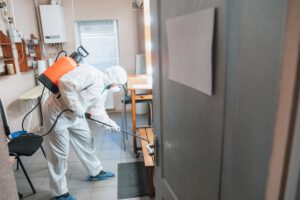One of the most common signs of a mold problem is visible mold. The good news is that removing surface mold is simple and relatively inexpensive. Documentation of mold growth is essential during remediation. Mold remediation professionals will take pictures and videos of all affected areas to provide the most thorough cleanup possible.
While mold growth can be unsightly, it is also a warning sign of a moisture problem. A home or building with too much moisture can become infested with toxic mold, which produces spores that can be harmful to humans. Spores from mold are easy to spot, as they are usually green or black and grow in colonies.
If you notice a musty odor, the likelihood of mold growth is high. It can appear on ceiling tiles, walls, and carpets. Moreover, the growth may be hidden in ductwork or other materials above the ceiling. If you notice the presence of mold, it is imperative to get it inspected by a professional. Proper ventilation can help prevent the growth of mold.
Once the problem has been identified, it is crucial to get rid of the source of the moisture. You should also make sure to dry wet materials to prevent the formation of mold. If you can get the materials to dry within a day, it is unlikely that mold will form.
A mold infestation can be difficult to eliminate on your own, but it can be removed. A diluted chlorine bleach solution can be used to remove mold from the home. A cup of bleach is enough, but be careful not to use too much. If you must use bleach, make sure you do so in a well-ventilated area. You should also wear protective clothing and goggles to protect yourself from the chemical.
If you notice mold on a non-porous surface, it is easy to remove it. Just apply water and dish detergent to the area. You can also use a scrub brush, but make sure to use the proper gear. Also, open windows and doors, so you don’t inhale mold-causing air. If the mold is on a porous surface, you can use a 50/50 mixture of white vinegar and 3% hydrogen peroxide. If you cannot remove all of the molds, you can cut them out.
The best way to get rid of surface molds is to clean them as soon as possible. There are many chemicals that you can use to get rid of mold, but bleach is the most powerful. It is recommended for use on walls and other areas where mold can grow. However, be sure to follow all precautions and only use bleach if necessary. You can also use hydrogen peroxide or vinegar, as these chemicals can kill mold at its root.
Another easy way to get rid of surface molds is by making a baking soda solution. It is easy to make this solution by mixing one teaspoon of baking soda with two cups of water. Spray it on the affected area and scrub it with a scouring brush. If you see any remaining mold, you can then rinse the affected area with warm water. Baking soda is an excellent disinfectant and can also be used to get rid of mold odors.
The cost of mold removal varies greatly depending on its type and location. Surface molds are less expensive to remove, but they may require extensive cleaning and replacement of materials. More expensive forms of mold may require invasive testing and cleaning for hazardous materials. If mold has caused wood rot or other damage, the cost may rise to $5,000 or more.
Surface molds are not as difficult to remove as black mold, but they should still be removed by a professional. Using a vacuum can help collect particles as small as 10 microns. It also helps get rid of larger mold spores. The EPA’s Guide to Home Mold Removal offers recommendations for DIY cleaning and hiring a mold remediation professional.
A good rule of thumb is to treat surfaces with detergent and water to prevent mold growth. This is especially important if you have a porous surface. Caulking may not completely remove mold, and it may cause damage to the paint. However, it is still a good idea to wear gloves and face masks when dealing with surfaces affected by mold. You should also wash your hands thoroughly after cleaning any surface affected by mold.